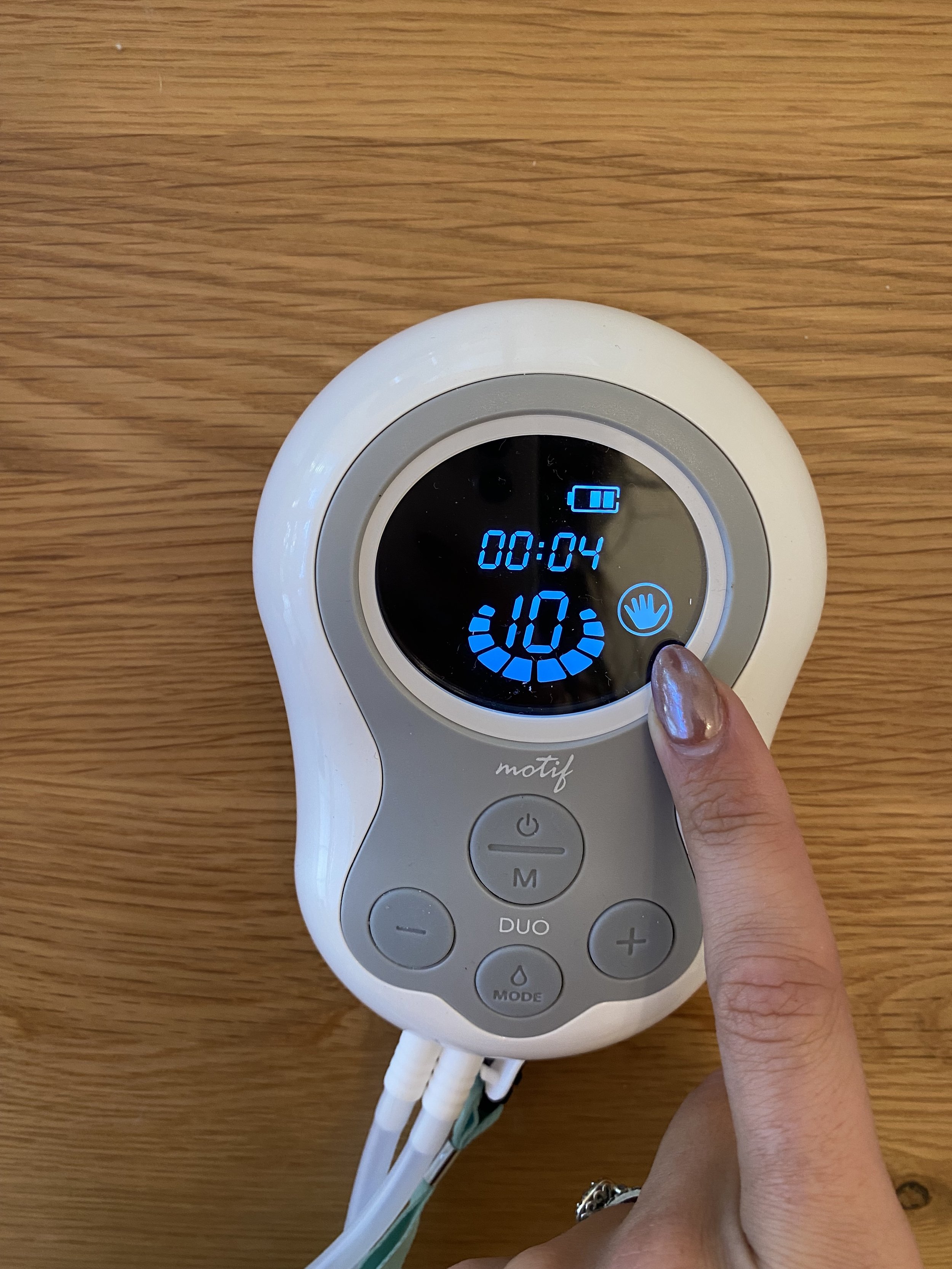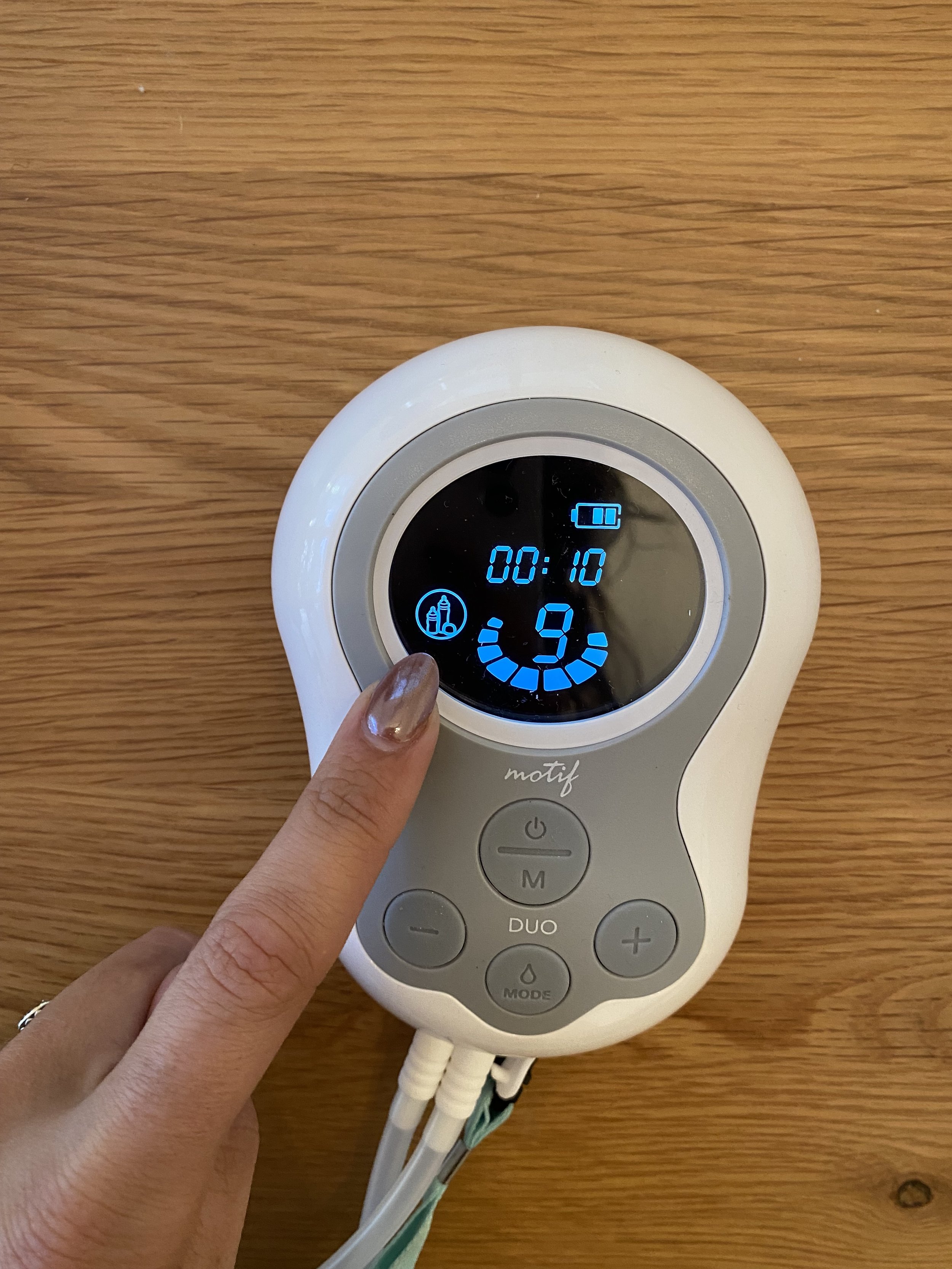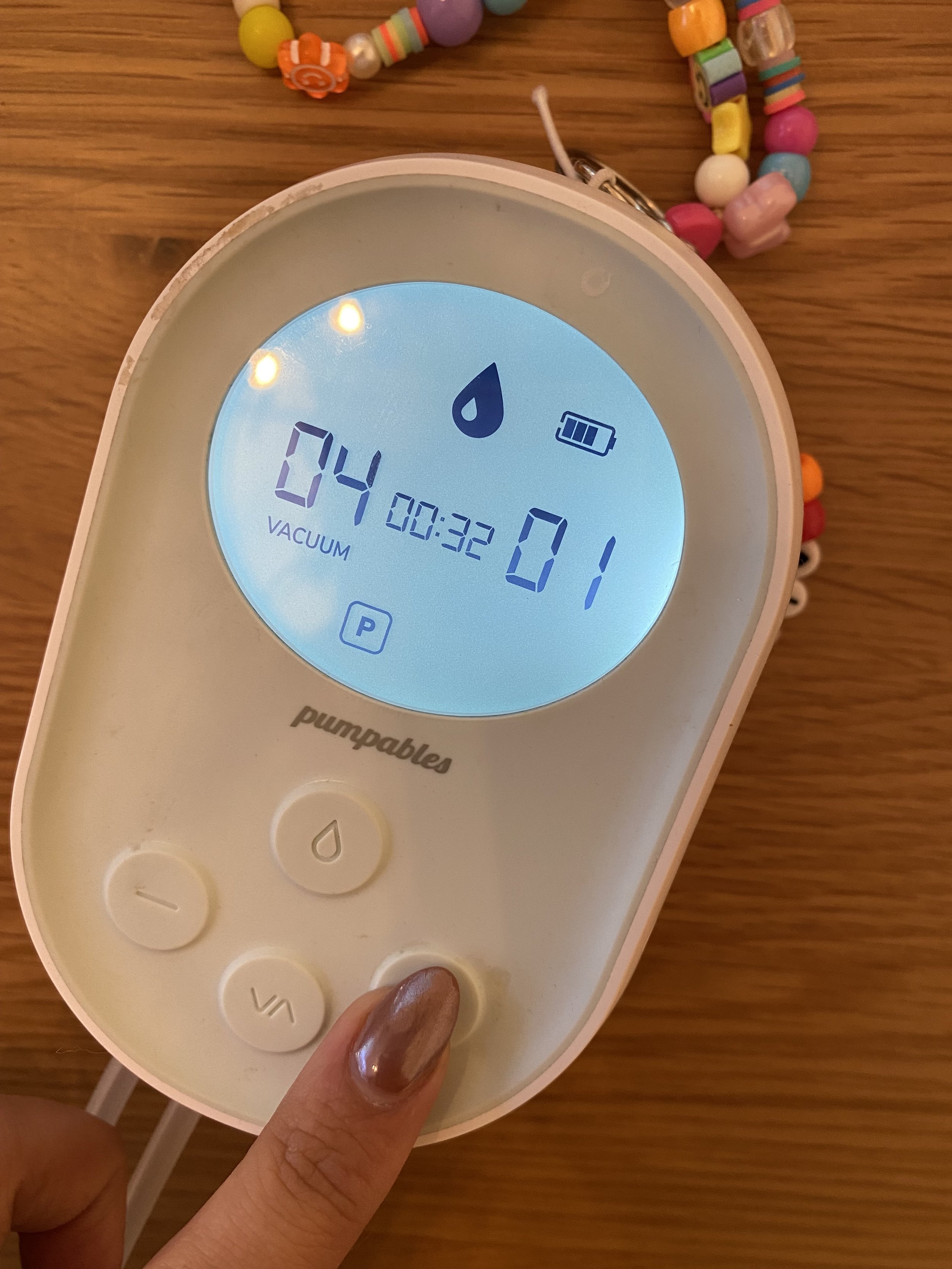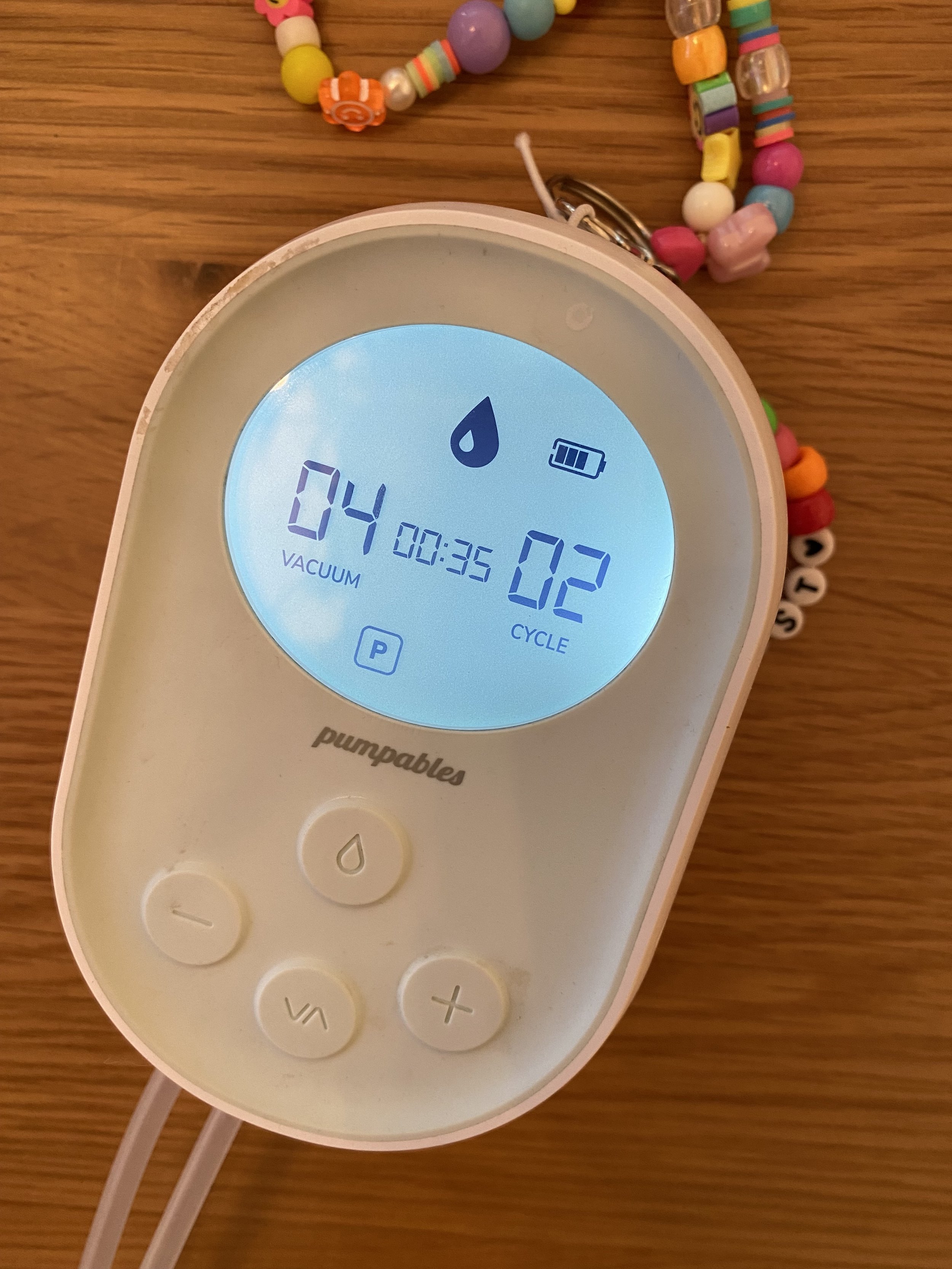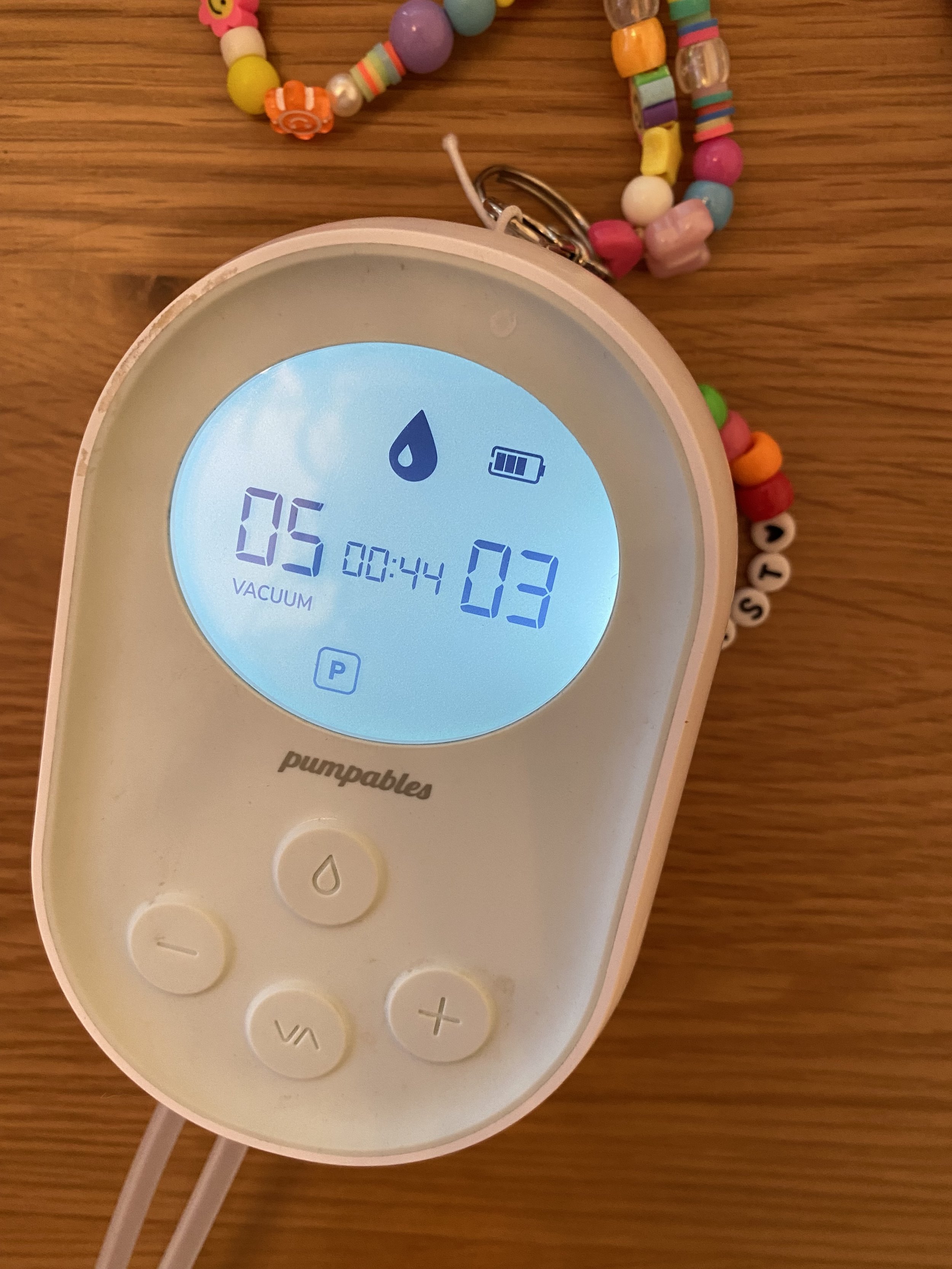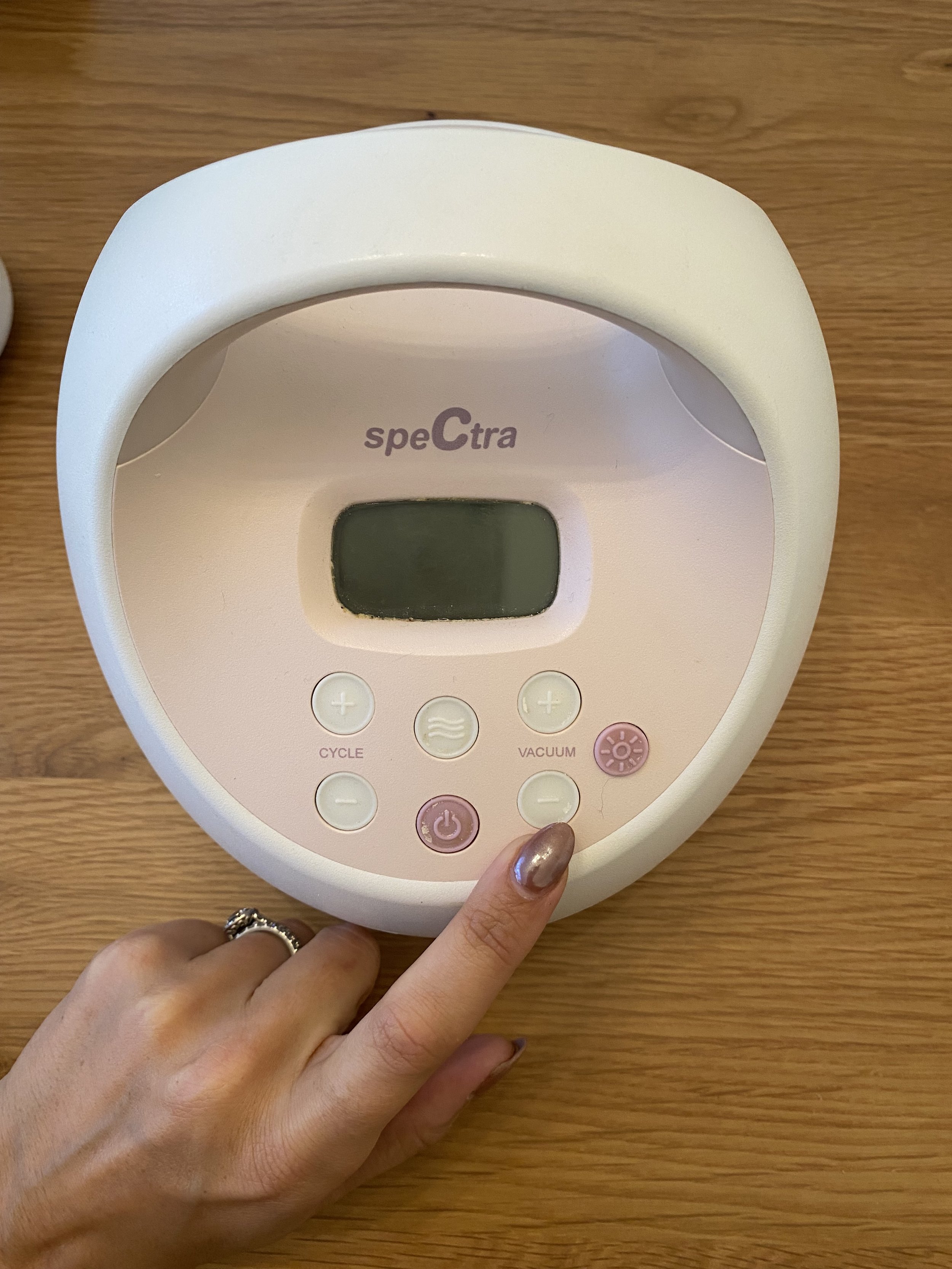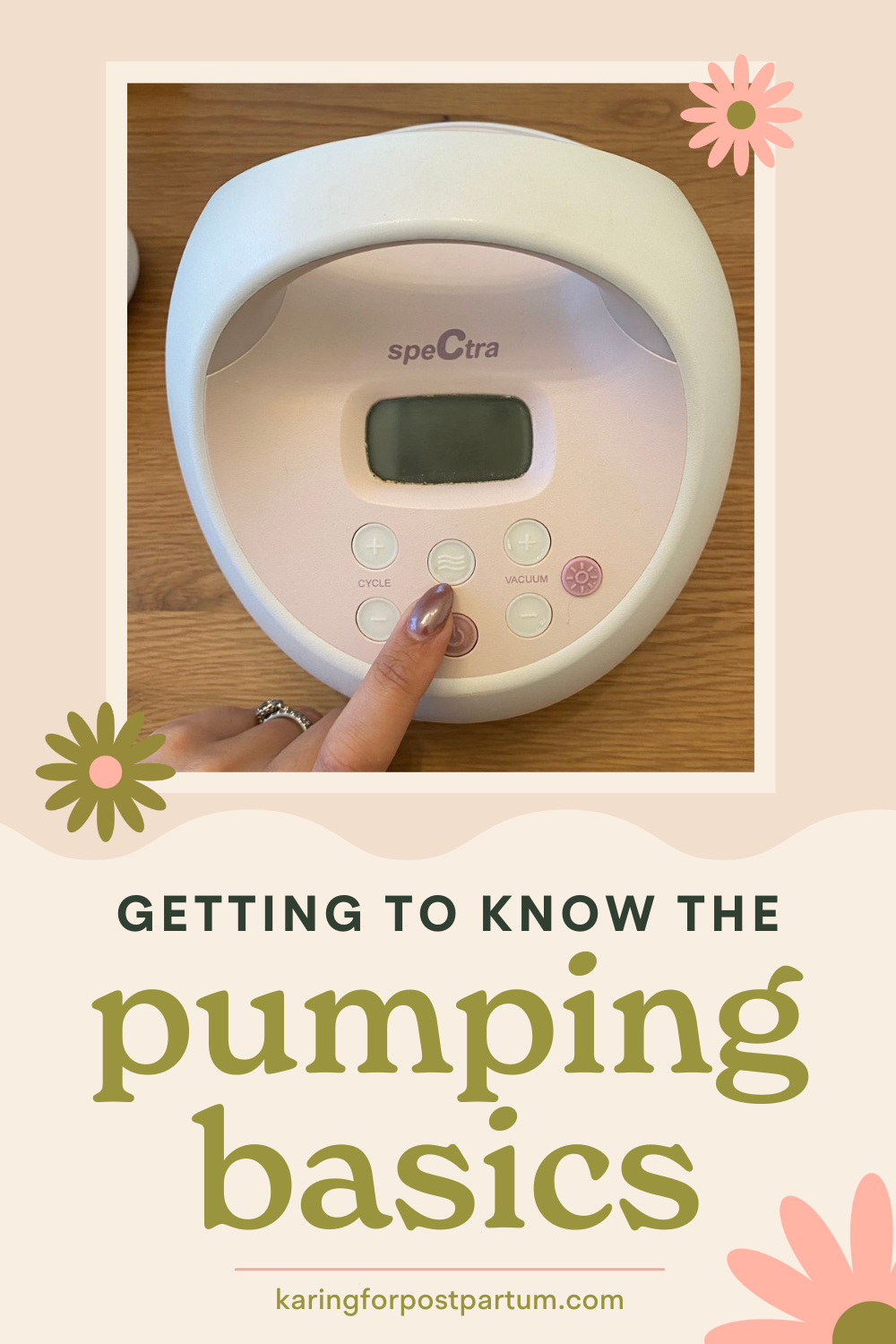Pump Basics
Okay— CPMs, vacuum, suction strength, cycles, phases, expression, stimulation, pulls, efficiency, frequency— the list goes on, but what the heck does it all mean?!
These are some of the “terms” or abbreviations associated with pumping and pump settings, and they can be extremely confusing if you aren’t familiar with them. Many times, pumping manuals and educational videos refer to these terms, but don’t explain what exactly they mean. I’ve got you, mamas!
Let’s break down all of these terms and what they mean, so that you can better navigate your pump, as well as choosing which pump you may wish to try! I talk through some pump settings and break this all down in real time in my breastfeeding course here.
Quick Breakdown: PUMPING 101
With breastpumps- the job is to “mimic” a baby’s sucking pattern at the breast. Babies come to the breast hungry and start feeding in short, quick bursts to initiate a milk “letdown” (fast flow of milk). The small quick bursts of sucks increase the hormone oxytocin, which initiates a “milk ejection reflex”, or a huge push of milk out of the breasts. As the milk “lets down” (think of it as floodgates opening up for a faster flow), baby’s feeding pattern switches to long, slow gulps to actually swallow down the milk. Make sense?
stimulation + expression modes
Knowing the above, we want our pumps to work similarly to how a baby would nurse. Therefore, many pumps have an option for TWO modes/phases: STIMULATION + EXPRESSION.
stimulation mode/phase 1
AKA: “Massage Mode” or “The hand” (icon that appears on some pumps)
I like to refer to these “modes” as phase 1 (stimulation) and phase 2 (expression) to keep it simple. In stimulation mode, we want our pump to be sucking in short quick bursts. Typically, this is around a speed of 70 CPM (we will get to speed in a bit!). During this mode, we won’t usually see milk pooling from the breasts in large amounts. Many times, we will see nothing at all, or start to see smaller drips of milk. As the pump keeps sucking fast + frequently in this mode, it will cause our body to “open the floodgates”. You may notice after a minute or 2 (this time differs for everyone) that your milk will start to spray, stream, or drip faster/consistently out of the breast. Some women also feel “pins and needles” or a tingling sensation at this point. This is your milk “letting down”. At this point, we want to switch to longer, slower pulls (phase 2) to maximize milk extraction from the breast. We can do this by hitting the “letdown button” on our pump, or by decreasing the cycle speed manually.
Now, hit that button!
Pictured here is the infamous “bacon button” or “waves” or “letdown button” to switch the pump between phase 1 to phase 2. Pictured here is the Spectra.
Phase 1 >> milk lets down >> push button for >> Phase 2
expression mode/phase 2
AKA: “Bacon Mode” or “The waves” (icon that appears on some pumps)
As we switch to this mode, milk will be pulled from the breasts in longer, slower tugs. You can typically even hear the difference in your pump’s motor/sound when you switch the mode. Many women stay in “phase 2” for a bit to extract max milk until the flow stops. Once this happens, if you can switch back to phase 1 (just hit the letdown button again, or manually increase the cycle speed) to “ask your body for another letdown” by utilizing those short quick bursts again. If you get another, great! If not, don’t fret!
Below, you can see stimulation mode(the hand) and expression mode (the bottles) that appear on the Motif Duo portable pump to show the modes. Just to give an idea how it can look on different pumps!
Letdown Button
This button is not present on all pumps (should be!), but it allows you to toggle between phase 1 and phase 2 by just pressing a button. Many pumps show this button as a little wavy line, or drops (as the Medela Freestyle Flex pictured here to the right).
Cycle Speed
CPM= Cycles per minute
This is the frequency or number of times the nipple is being pulled into the flange tunnel per minute. The higher the cycle speed (IE: 70CPM), the faster your pump pulls your nipple back and forth in the flange. The lower the cycle speed (IE: 38), the longer, more drawn out tugs your pump will give.
As stated above, usually a faster cycle (higher number) helps stimulate the breast to initiate a letdown of milk. Then, a slower cycle (lower number) will help extract max milk. Everyone is different in what number they like to use in expression mode to extract max milk.
In the photos below, you can see the cycle speed increasing on the Pumpables GA portable pump. (Cycle Number is on the right, Vacuum Strength is on the left).
Vacuum/Suction
This is the strength of your pump’s pulls. This is going to differ between everyone, as what’s comfortable or tolerable to one person may not be tolerable to another. One common myth to bust right off the bat— higher suction does NOT automatically mean more milk. Comfort is way more important than pumping on the highest vacuum level. If you’re pumping at a super high level and uncomfortable, it can actually cause the body to tense up + inhibit milk flow! Comfort is key! I usually tell patients to turn up their suction to the point it’s starting to be uncomfortable. THEN, turn the suction down from there— to a point you feel like “phew, this is okay. This is comfortable/tolerable for me.” You can always adjust as you see fit!
Pumps’ motor or vacuum strength is measured in mmHg (that’s why you may see this number when talking about pump strengths).
Memory Mode
Some pumps come with a “memory mode” or “programmable mode” and if yours has this, I’d use it!
As you continue pumping, you come to find how your body responds to the pump and what settings seem to work best for you and your body. Your pump can recognize these and you can save them into this “memory mode”. Therefore, each time you turn on your pump, that’s all you have to do. Your pump will automatically switch you from phase 1 (higher number) to phase 2 (lower number) at the time your body usually initiates a letdown of milk. It also remembers what vacuum strength and cycle speeds you like for phase 1 and phase 2. This is so nice so that you don’t have to worry about pressing a bunch of buttons to switch things over— especially if you get busy with something and forget!
Auto Shut-Off
This just refers to the time your pump automatically turns off. Some pumps will turn off if you don’t manually turn it off by 30 minutes. This helps in case you are using a pump and get busy doing something + forget to turn it off!
I hope this is helpful in breaking down some of the terms surrounding pumping! There are lots of different settings and adjustments to play with and learn, and you’ll come to find what works best for your body with time. Settings that work best for one person, may not necessarily work the same for another! I think that’s incredibly important to remember!
Replacing Pump Parts
Replacing some parts of your pump is key to its efficiency in milk removal and comfort. Check out the freebie below to know what pump parts you may need to replace on your pump and how frequently.
Was this helpful? Save it for later or share with another pumping mama!


